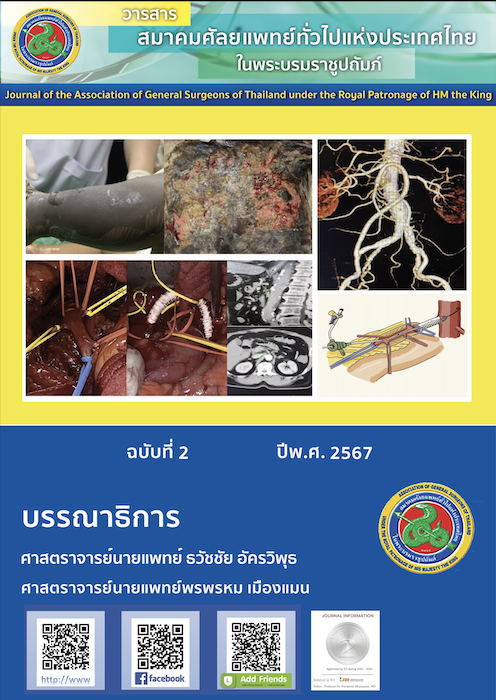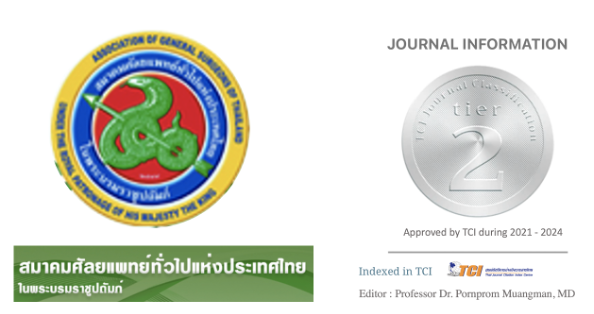The Case Report of Novel Non-Adhesive Foam Dressing in Deep Partial Thickness Burn Wounds: From in vitro to Clinical Use
Keywords:
Foam dressing, Innisorb, Grafted burn wound, Deep burn wound, Thai-madeAbstract
Non-adhesive foam dressings are used in moderate to high exudative wounds. However, their high cost could make it oppressive in low socioeconomic settings. Innisorb®, a Thai-made, cost-effective non-adhesive foam dressing, offers high absorption and retention capacities. This type of dressing can be utilized for various burn wounds, from initial dressings to graft covering materials.
This case report emphasizes the potential use of non-adhesive foam dressings in the recipient sites of skin grafts, which can reduce the costs of treatments. One pre-clinical study has demonstrated its effectiveness in recipient sites, although clinical data is limited. There are a few reports of using this material in other types of grafted wounds but its application in grafted burn wound has not been documented.
This case demonstrates the successful treatment of a burn wound using this innovative material and technique resulting in complete healing.



